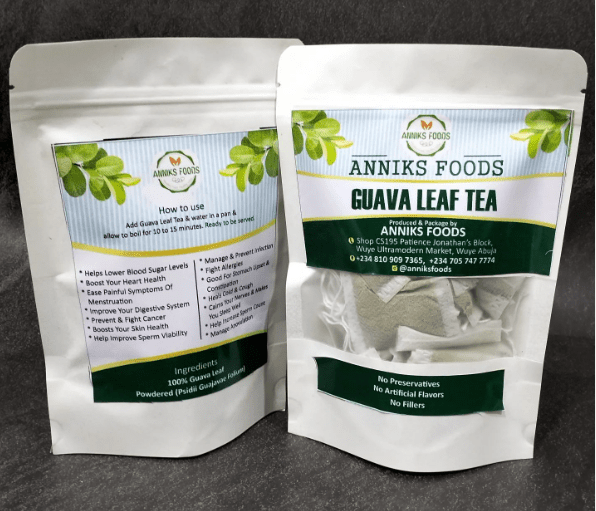Coffee and tea are often compared, and for fair reason. Both have centuries of heritage, are enjoyed across the world, come from plants, can be enjoyed hot or cold.
Generally, it’s accepted that coffee contains much more caffeine than tea. A quick Google search shows that in 100ml of coffee, there’s 40mg of caffeine, whereas for the same volume of “tea”, there’s only 11mg.
But one type of tea stands out among the rest as far as caffeine is concerned: green tea. Depending on how long they’re steeped for and where they come from, green tea leaves can actually contain much more caffeine than other types of tea.
To learn more about how this compares to coffee, I spoke to two experts. Read on to find out what they said.
WHAT IS GREEN TEA?
Before diving into which drink has more caffeine, let’s first define what green tea is. Green tea is made from the Camellia sinensis plant, and different parts of the plant are used for different types of tea.
Will Battle is the Managing Director at Fine Tea Merchants Ltd. He tells me that green tea is a tea in which the enzymes have been deactivated. This means that it does not oxidise.
“Essentially, it has been steamed or pan-fried in order to prevent oxidation,” he explains. “That makes it distinct from a black tea, oolong, or any of the other types of tea.”
Francois Mathieu is co-founder of Hojicha Co, one of the most popular roasted green tea brands outside of Japan. He mentions that contrary to common belief, green tea is not defined by its colour.

Instead, it is categorised as a green tea thanks to its lack of oxidation. Furthermore, there are different ways that tea is kept green, depending on where it is produced. In Japan, steaming is the most popular method, while in China, they are often pan-fired.
However, green tea is a broad term, and different green teas are distinct thanks to their growing methods, the timing of harvest, and processing methods.
“For example, in the big family of green teas, the most popular one in Japan is the sencha,” Francois explains. “This is a tea that is harvested earlier in the year with younger shoots.
“Then there is another Japanese green tea that is harvested later in the year called bancha, a common tea that is considered a lower grade.”
One that has taken the world by storm is known as matcha.
“The process for matcha is slightly different,” Francois adds. “Typically, matcha is produced by shading the tea plant for a number of days, [allowing it] to produce different chemical reactions.
“Farmers then remove all of the twigs and then they grind it. This results in a very different product.”
COMPARING CAFFEINE CONTENT
Caffeine stimulates the nervous system, muscles, and heart when it is broken down. This is because it creates chemicals called neurotransmitters.
These neurotransmitters (theophylline, paraxanthine, and theobromine) bind to receptors in your brain. Typically, these receptors are bound to a neurotransmitter called adenosine, which makes us sleepy. These neurotransmitters instead “block” this process, making us alert and keeping us awake instead.
With coffee, the amount of caffeine will also vary depending on the type of coffee bean (arabica has less caffeine than robusta), how it is roasted, how it is brewed, grind size, water temperature, and more. The same is true of green tea.
“Based on FDA estimates, an 8oz cup of coffee contains 80 to 100mg of caffeine, and an 8oz cup of tea will be something like 30 to 50mg,” Will explains. “However, when you look at the raw material and the ratio of liquid to solid, it’s different.”
Will explains that gram for gram, green coffee beans contain less caffeine than green tea, even if the average cup of coffee is higher. This is because we use a far greater amount of coffee than green tea leaves to brew each respective beverage.
“There’s a graph on our site comparing different Japanese green teas with coffee,” Francois adds. “Official data from the Japanese government suggests that coffee has higher caffeine levels than green tea.”
Within coffee, as a general rule, species and roast profile affect the caffeine content of an individual coffee, while the intensity, concentration, and TDS of the beverage will also influence the amount of caffeine in each cup.
Similar factors ring true for green tea. For instance, the high surface area of matcha allows more chemicals to be extracted, including caffeine. Loose leaves, on the other hand, need to steep for a longer period of time to reach a similar level.
However, Francois explains that the part of the plant used also plays a part.
“Higher and younger shoots at the top of the plant, which are typically present in matcha and sencha, have a higher level of caffeine,” Francois explains. “Mature tea leaves found lower on the plant have lower levels of caffeine.”
In addition, green tea harvested early in the season is generally higher in caffeine than leaves picked at later harvests.
OTHER BIOLOGICAL FACTORS
Will goes on to explain that the amount of caffeine is not the end of the story; you also need to consider how the body absorbs it.
“With coffee, you get a sharp peak, which is an immediate impact, whereas tea is absorbed more gradually in the intestines as it is broken down,” he explains.
Francois, meanwhile, brings up the issue of L-theanine, which some studies suggest has a relaxing effect on the brain, thereby slightly muting the impact of the caffeine.
He also notes that talking about how much caffeine you get per gram in green tea is a focus on the wrong question. L-theanine, he says, is an amino acid that makes you feel calmer. Combined with caffeine, research suggests that it can also improve cognitive abilities.
“Mixing the two together is the perfect combination, where you are extremely alert yet calm at the same time,” he says. “You are able to focus on tasks without ever feeling stressed about them.”
HOW IMPORTANT IS THE CAFFEINE CONTENT IN GREEN TEA?
While coffee is often renowned and celebrated for its caffeine content around the world, green tea has a slightly different market. However, just like coffee, Will says that educated green tea consumers appreciate its unique combination of mouthfeel, flavour, and aroma.
“There are also the health benefits of the catechins within green tea,” he adds. “I think there’s a lot of positive work being done, particularly on the epigallocatechin gallate (EGCG)”
The anti-inflammatory and antioxidant effects of EGCG are thought to be one of the main reasons for green tea’s reputation as a healthy beverage.
“There are different types of consumers,” Francois says. “There are people seeking the positive health effects of antioxidants in green tea, while others are looking for the caffeine and L-theanine combination. Many people are simply enjoying the flavour. There are many reasons to consume green tea.”
Green tea and coffee are often compared for their similarities. And while, generally speaking, a cup of brewed coffee will more or less always contain more caffeine, it’s important to realise that the caffeine content of both beverages actually varies quite a lot.
This is based on a number of factors such as harvest timing, roasting, processing, species (for coffee), and how each beverage is brewed. If you’re looking for more caffeine, then coffee will generally be the safer bet, but as Francois and Will, note – drinking either beverage for just caffeine alone may mean you’re missing out on more than you think.
Source: perfectdailygrind.com


















